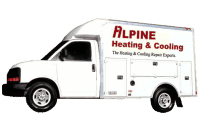Ductless Split System Advantages
A ductless split system represents a significant investment in comfort, safety, and efficiency. To enjoy the many benefits of ductless technology, it is important to understand the various elements involved in a successful installation. Alpine Heating & Cooling encourages anyone considering an HVAC equipment purchase to explore the cost-effective and environmentally friendly solutions provided by ductless split system advantages.
The Advantages of Ductless Technology
Every year more homeowners in Skagit Valley become acquainted with the versatility of ductless air conditioners and heat pumps. When compared to traditional furnaces and central air conditioning equipment, mini splits offer numerous compelling benefits.
- Versatility: For room additions, garage conversions or areas requiring supplemental heating and cooling, ductless equipment is quiet, efficient and easy to install.
- Reduced Energy Costs: Point-of-use air handlers deliver conditioned air directly into each room without the loss of thermal efficiency associated with an air distribution network. Ductless systems include advanced inverter technology, which offers the highest SEER ratings in the industry.
- Better Comfort: The zoning concept behind ductless design saves energy and also helps improve indoor comfort. The temperature in every room can be tailored to meet the personal requirements of each occupant.
The Importance of Design
In the system design phase, Alpine Heating & Cooling complete calculations to establish the specific load requirements for every room in the building or home. Equipment is selected so that the capacity matches the heaviest theoretical load that could occur during extreme weather.
Many companies that use outdated “rule of thumb” formulas for sizing equipment can compromise comfort, humidity control and degrade system performance.
Why Choose Alpine Heating & Cooling
Regardless of the build quality of the equipment, Alpine Heating & Cooling will have a substantial impact on performance, efficiency, and longevity. Alpine Heating & Cooling has extensive experience and knowledge and provides important services that will help keep HVAC systems running dependably over an extended lifecycle.
Since heating and air conditioning is a highly specialized industry, it is important to choose a company that has a suitable level of knowledge and experience to address the specific requirements of the job.
- Areas of Expertise: Many HVAC companies specialize in a specific industry discipline. This includes new construction, retrofit, commercial HVAC and service. Alpine Heating & Cooling has the skill and expertise to directly meets the requirements for a particular application and will result in a more successful and less expensive outcome.
- The Screening Process: References and referrals are important tools to verify the quality of our work – check out our reviews!
Understanding SEER Ratings
The Seasonal Energy Efficiency Ratio (SEER) is a federal standard designed to provide consumers with an easy way to compare the operating costs for different brands and models of air conditioners. Relative efficiency between two machines can be calculated by dividing the higher SEER rating by the lower SEER rating. For example, replacing a 10 SEER air conditioner installed in the early 2000s with a high-efficiency 16 SEER unit can save up to 60 percent on annual cooling costs, depending on local climate conditions.
Energy Savings Tips
Homeowners can dramatically lower heating and cooling operating costs by changing minor lifestyle habits and considering several relatively inexpensive upgrades.
- Closing the Blinds: Window coverings provide protection against convection and radiant heat. Shades with a k-value rating can reduce the thermal gain from single-pane windows by up to 50 percent.
- Replace Light Bulbs: A conventional light bulb produces 10 percent light and 90 percent heat when it is lit. A compact fluorescent or LED light bulb is far more efficient, especially in climates with extreme summer heat. In fact, over half the total energy savings from a light bulb replacement can be attributed to the reduced summer cooling load.
- Plant Shade Trees: Shade trees have a positive impact on climate change and can help reduce a home’s total air conditioning load when strategically positioned to reduce the effects of south and west sun exposure. The energy savings can be magnified for homes with a significant amount of exterior glass.
- Raise the Thermostat: Raising the thermostat by one degree during summer months can lower energy usage by up to five percent and also reduce equipment-related stress.
- Upgrade Insulation: For older homes with loose perimeters, insulation offers the greatest energy savings per dollar invested. For homes built before the year 2000, upgrading insulation levels to meet current Department of Energy standards can save up to 30 percent on annual cooling costs with an associated payback of less than five years.
Repair or Replace
Even with proper maintenance, a central air conditioner or furnace will eventually need to be replaced. Whether due to age or obsolescence, equipment begins to malfunction and repair costs mount. As performance diminishes, utility costs continually rise as the HVAC unit must work harder and longer to satisfy the indoor load.
While there is no specific timeline for equipment longevity, HVAC systems that are eight years or older should be considered for replacement. Leading-edge ductless systems combine exceptional levels of comfort with the highest available efficiencies.
Alpine Heating & Cooling invites you to learn more about the versatility, efficiency and attractive appearance offered by modern ductless split systems.


